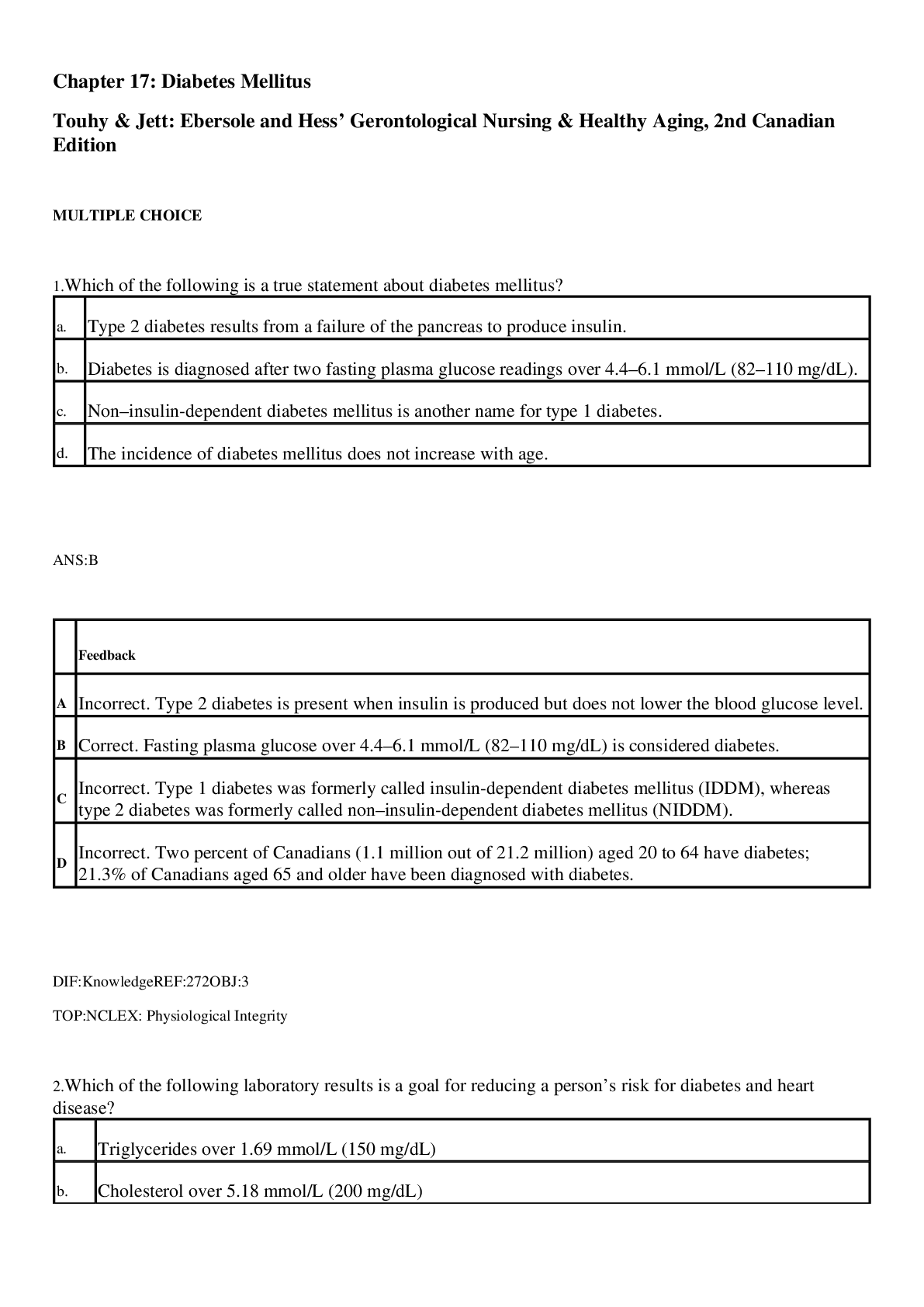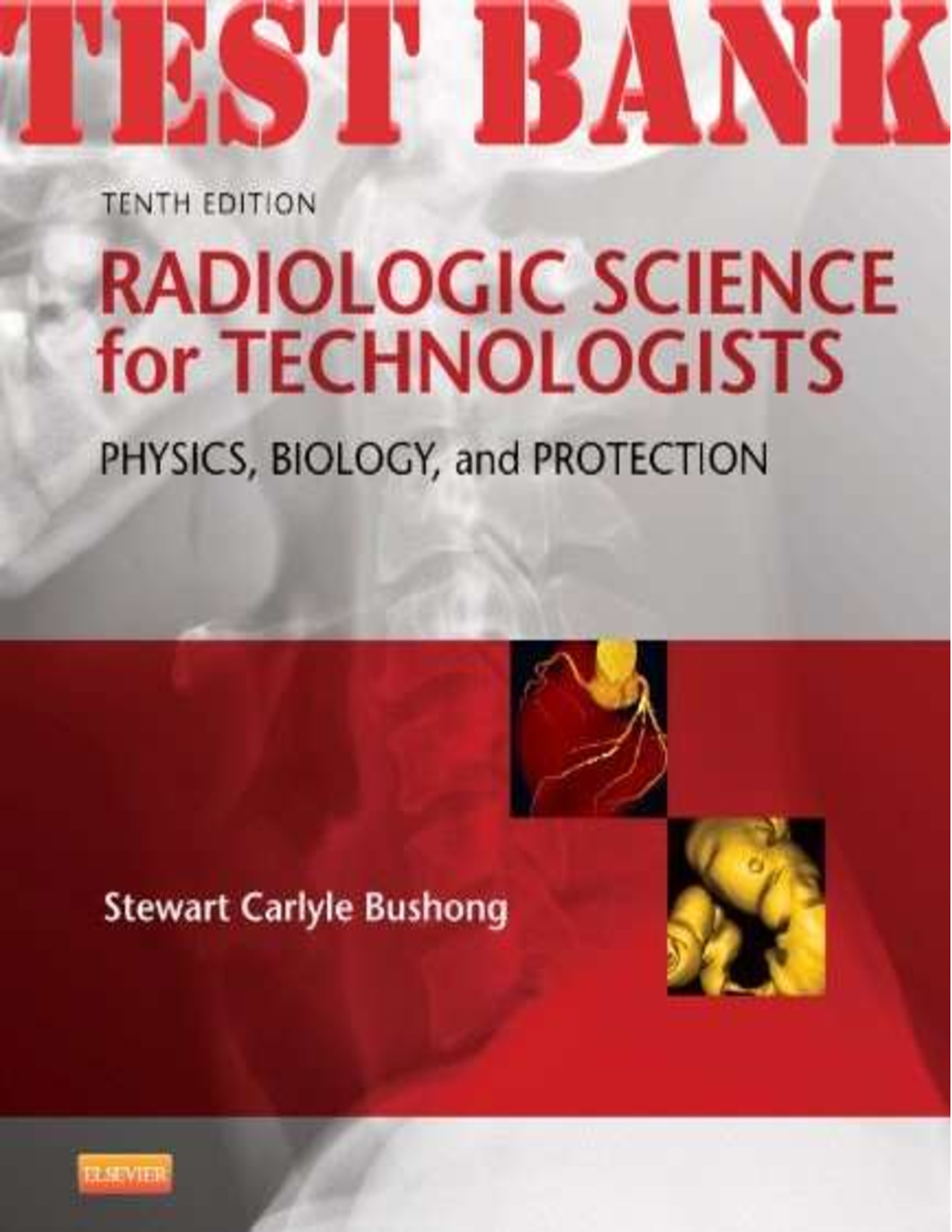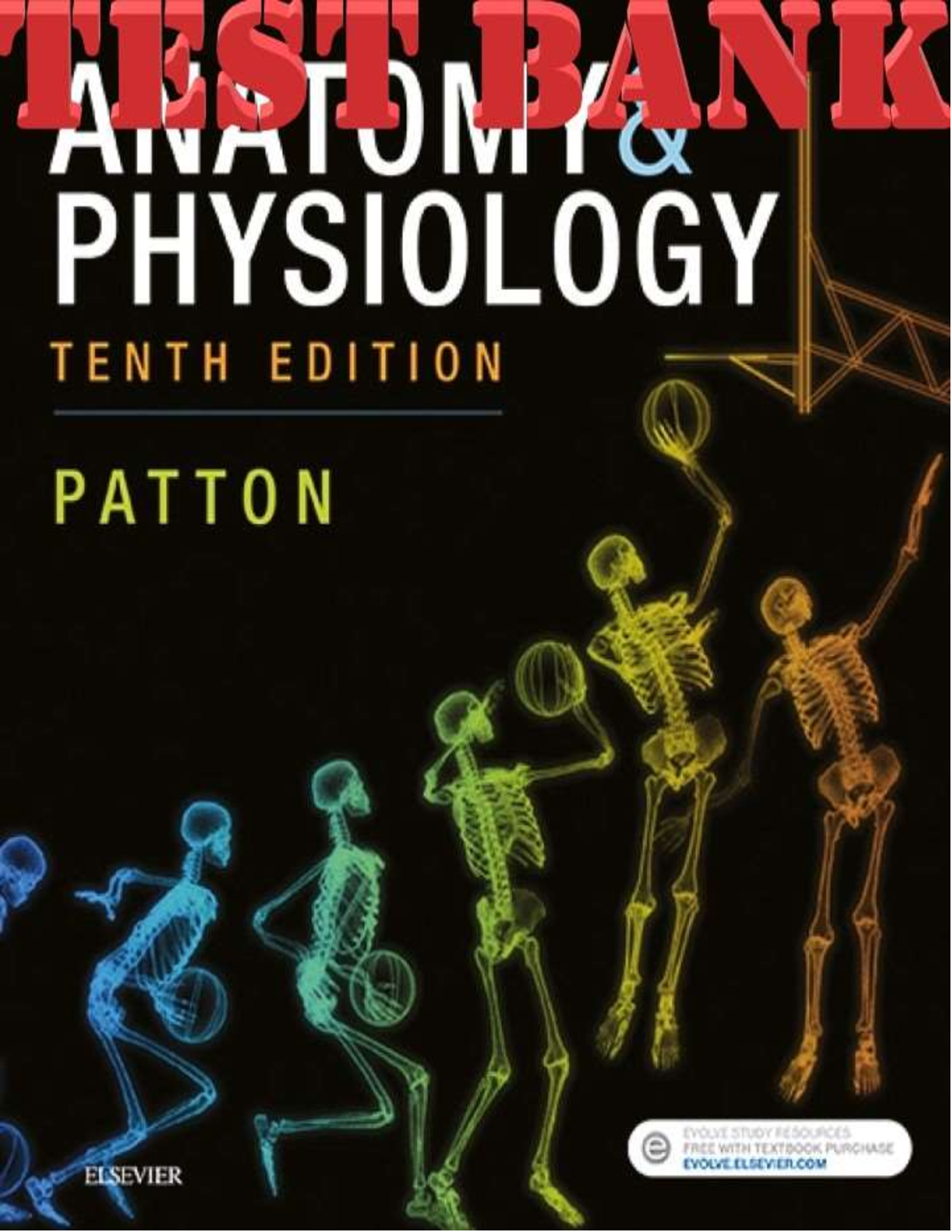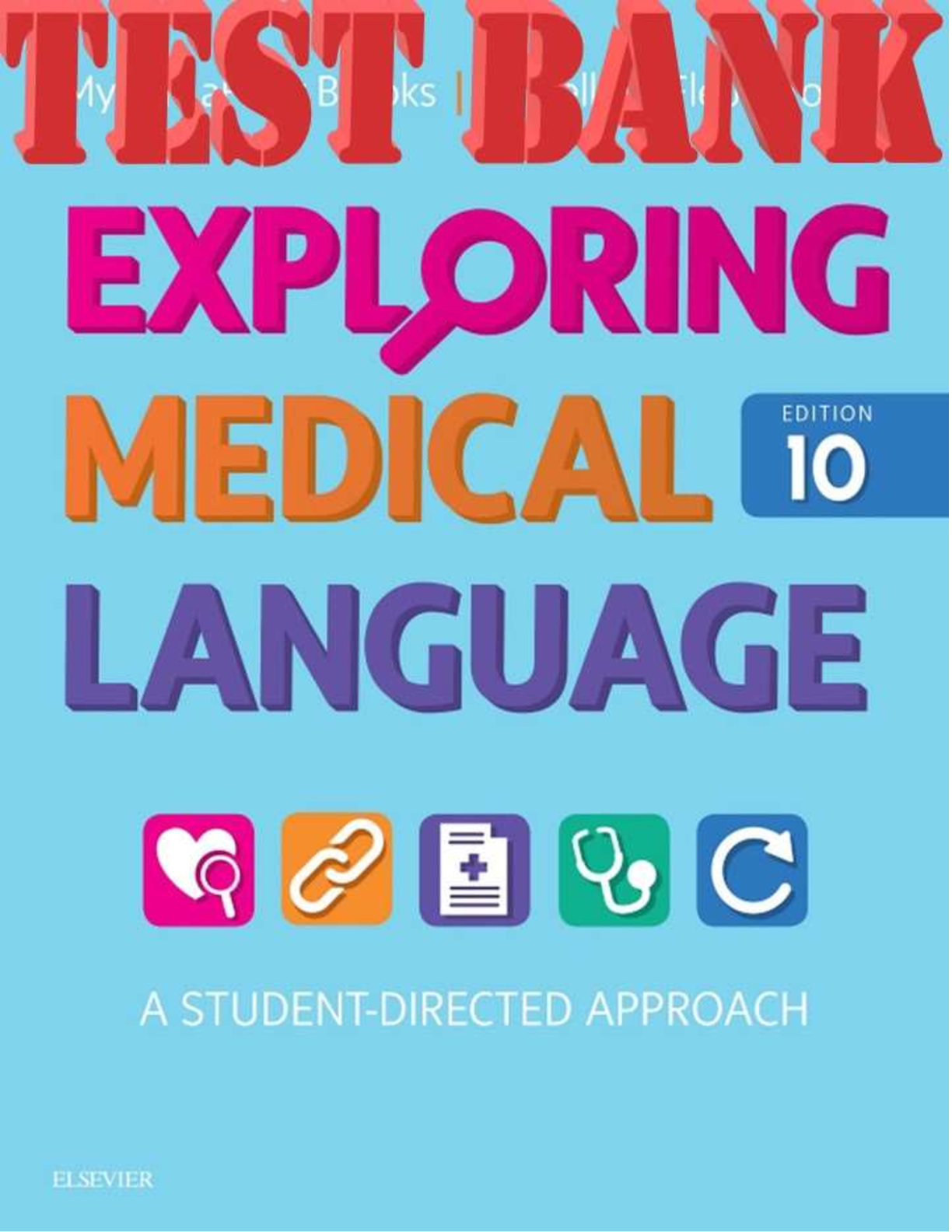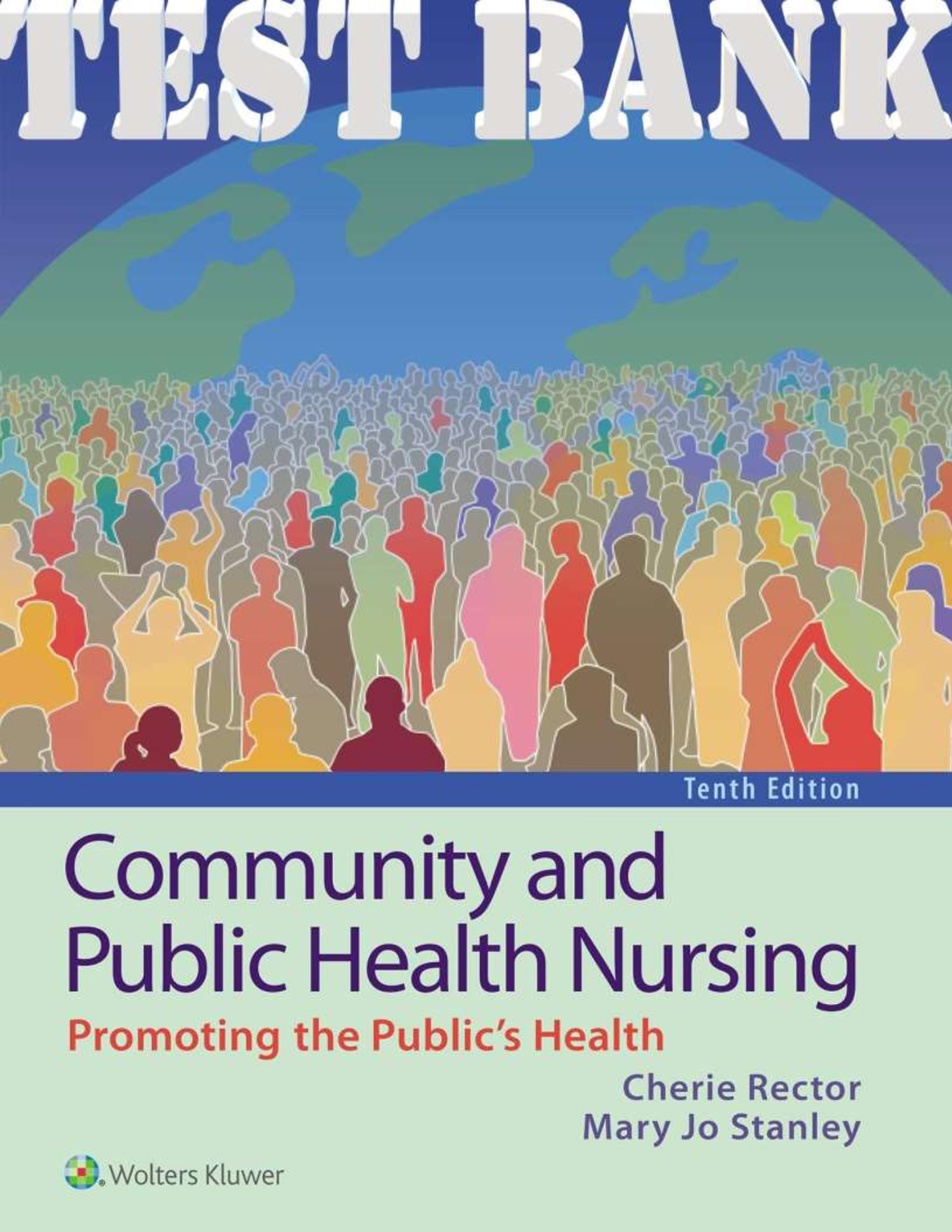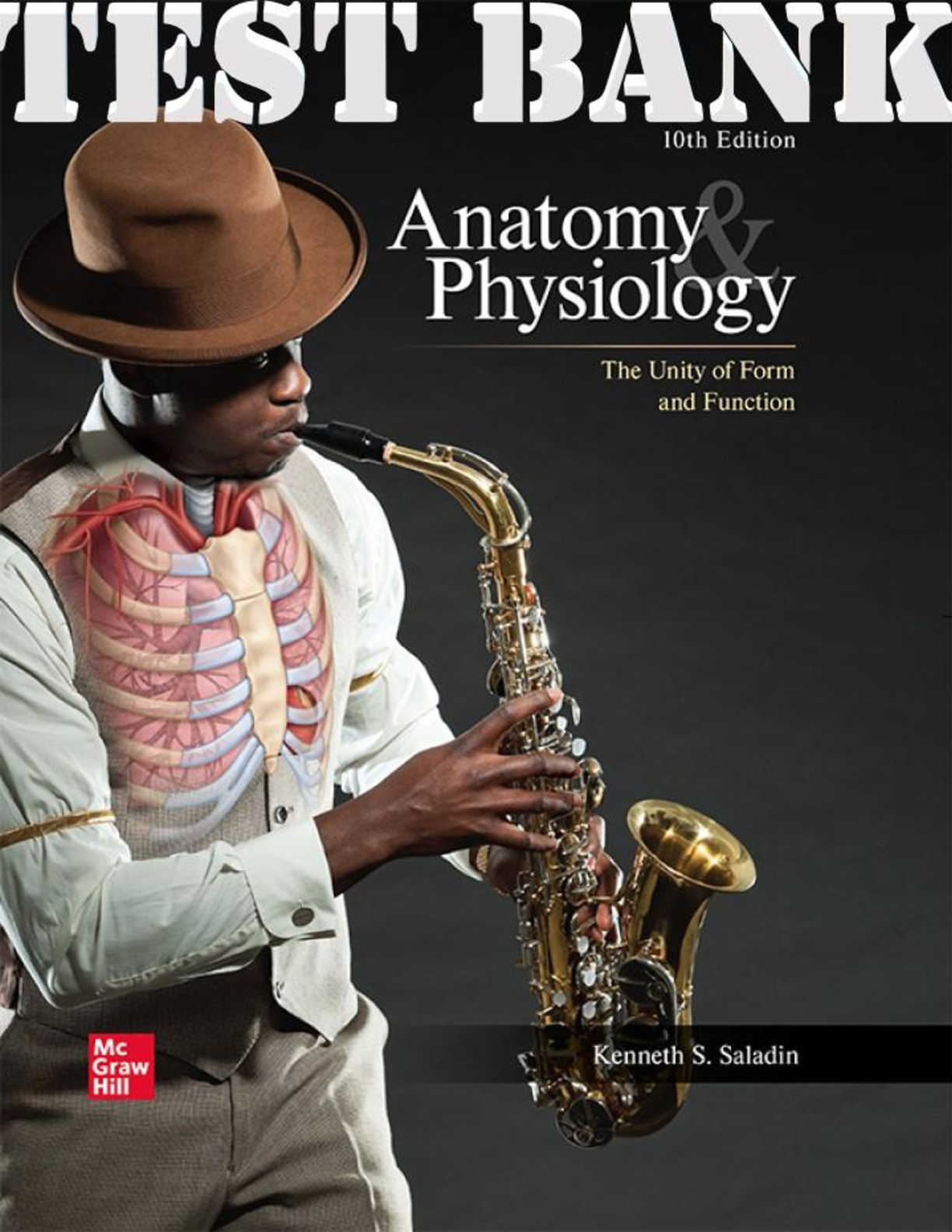*NURSING > TEST BANK > TEST BANK FOR PORTH’S PATHOPHYSIOLOGY 10TH EDITION BY NORRIS CHAPTER 52: Disorders of Skin Integri (All)
TEST BANK FOR PORTH’S PATHOPHYSIOLOGY 10TH EDITION BY NORRIS CHAPTER 52: Disorders of Skin Integrity and Function
Document Content and Description Below
1. A client is exhibiting manifestations of superficial dermatophytosis of the skin with skin scaling and nail disintegration. Based on these findings, the nurse can anticipate that the client will be... prescribed: Select all that apply. A) An antifungal like ketoconazole B) An antibiotic like tetracycline C) Topical corticosteroid D) An antihistamine like Benadryl Ans: A, C Feedback: The fungi that cause superficial mycoses are called dermatophytes and require keratin for growth. Therefore, these fungi do not infect deeper body tissues or mucosal surfaces. The dermatophytes emit an enzyme that enables them to digest keratin, which results in superficial skin scaling, nail disintegration, or hair breakage, depending on the location of the infection. The principal agents are the azoles (ketoconazole, miconazole, clotrimazole, etc.) and the allylamines (naftifine and terbinafine). Both act by inhibiting the synthesis of ergosterol, which is an essential part of fungal cell membranes. Topical corticosteroids may be used in conjunction with topical antifungal agents to relieve itching and erythema secondary to inflammation. Antibiotics are not effective for fungal infections, and antihistamines are usually reserved for itching, which is not characteristic of this disease. 2. The clinic health care worker notices that a client has a fungal infection on her nails that looks like the fungus is digesting the nail keratin. The nail appears opaque and white in color. The client states she has had this for years. The health care worker suspects the client has: A) Candidiasis B) Cellulitis C) Onychomycosis D) Tinea corporis Ans: C Feedback: Onychomycosis often begins at the tip of the nail, where the fungus digests the nail keratin. Initially, the nail appears opaque, white, or silvery. The nail then turns yellow or brown and remains unchanged for years. Gradually, the nail thickens and cracks as the infection spreads. Candidiasis (moniliasis) is a fungal infection caused by C. albicans. This yeast-like fungus is a normal inhabitant of the gastrointestinal tract, mouth, and vagina. Cellulitis is a deeper infection affecting the dermis and subcutaneous tissues. The lesion consists of an expanding red, swollen, tender plaque with an indefinite border, covering a variety of widths. Cellulitis is frequently accompanied by fever, erythema, heat, edema, and pain. Tinea corporis (ringworm of the body) are oval or circular patches on exposed skin surfaces and the trunk, back, or buttocks. 3. Which of the following clients would be predisposed to developing a yeast-like Candida albicans fungal infection? A) A diabetic male child with circular patches on the arms B) An immunosuppressed cancer client with maculopapular satellite lesions C) A high school football player with fungal spores cultured on the feet D) A dance instructor with a rash on the hands described as raised borders Ans: B Feedback: In addition to microscopic analysis of skin scrapings for tinea fungal spores, a candidal infection often can be differentiated from a tinea infection by the presence of maculopapular satellite lesions found outside the clearly demarcated borders. Some persons are predisposed to candidal infections by conditions such as diabetes mellitus, antibiotic therapy, pregnancy, oral contraceptive use, poor nutrition, and immunosuppressive diseases. The most common types of tinea lesions are oval or circular patches with raised red borders consisting of vesicles, papules, or pustules on exposed skin surfaces. 4. A teenager reports ugly warts that have invaded her hands. She wants them gone before prom season. The nurse will likely be explaining which of the following treatment measures to this teenager? A) How to apply steroid creams and Band-Aids B) Applying a keratolytic agent like salicylic acid C) Taking a pair of tweezers and pulling the wart off D) How to safely use cryotherapy at home Ans: B Feedback: Verrucae, or warts, are common, benign papillomas caused by DNA-containing human papillomavirus (HPV) that invade the superficial skin keratinocytes. Removal is usually done by applying a keratolytic agent, such as salicylic acid, which works by dissolving intercellular cement and producing desquamation of the horny layer of skin without affecting normal epidermal cells. Steroid creams will not help with removal of a wart. Pulling the wart off is not recommended. Cryotherapy may be needed, but this is performed in a doctor's office. 5. Which of the following disorders of the skin is most likely to respond to treatment with systemic antibiotics? A) Acne vulgaris B) Urticaria C) Atopic dermatitis D) Verrucae Ans: A Feedback: The etiology of acne vulgaris is bacterial, and some clients may require treatment with systemic antibiotics. Urticaria (hives) and atopic dermatitis result from allergic and hypersensitivity processes. Verrucae, or warts, are of viral origin and thus unresponsive to antibiotic therapy. 6. A teenager with rosacea should be educated that in addition to the “blush appearance” on the face, she should also assess for which of the following additional complications? Select all that apply. A) Inflamed and tender axillary lymph nodes B) Eye problems C) Edema of the eyelids D) Large abscesses on the upper arms and neck Ans: B, C Feedback: Rosacea is a chronic skin disorder of middle-aged and older persons. The blush eventually becomes a permanent, dark-red erythema on the nose and cheeks that sometimes extends to the forehead and chin. Ocular problems occur in at least 50% of persons with rosacea. Prominent symptoms include eyes that are itchy, burning, or dry; a gritty or foreign body sensation; and erythema and swelling of the eyelid. Acne conglobata occurs later in life as a severe, chronic form of acne. Comedones, papules, pustules, nodules, abscesses, cysts, and scars occur on the back, buttocks, and chest. Lesions occur to a lesser extent on the abdomen, shoulders, neck, face, upper arms, and thighs. The comedones or cysts have multiple openings, large abscesses, and interconnecting sinuses. [Show More]
Last updated: 1 year ago
Preview 1 out of 13 pages

Buy this document to get the full access instantly
Instant Download Access after purchase
Add to cartInstant download
We Accept:

Also available in bundle (1)

TEST BANK FOR PORTH’S PATHOPHYSIOLOGY 10TH EDITION BY NORRIS ALL CHAPTERS
THIS PAPER CONSISTS OF ALL CHAPTERS
By GoldenA 3 years ago
$24
44
Reviews( 0 )
$4.00
Document information
Connected school, study & course
About the document
Uploaded On
Mar 01, 2021
Number of pages
13
Written in
Additional information
This document has been written for:
Uploaded
Mar 01, 2021
Downloads
0
Views
147


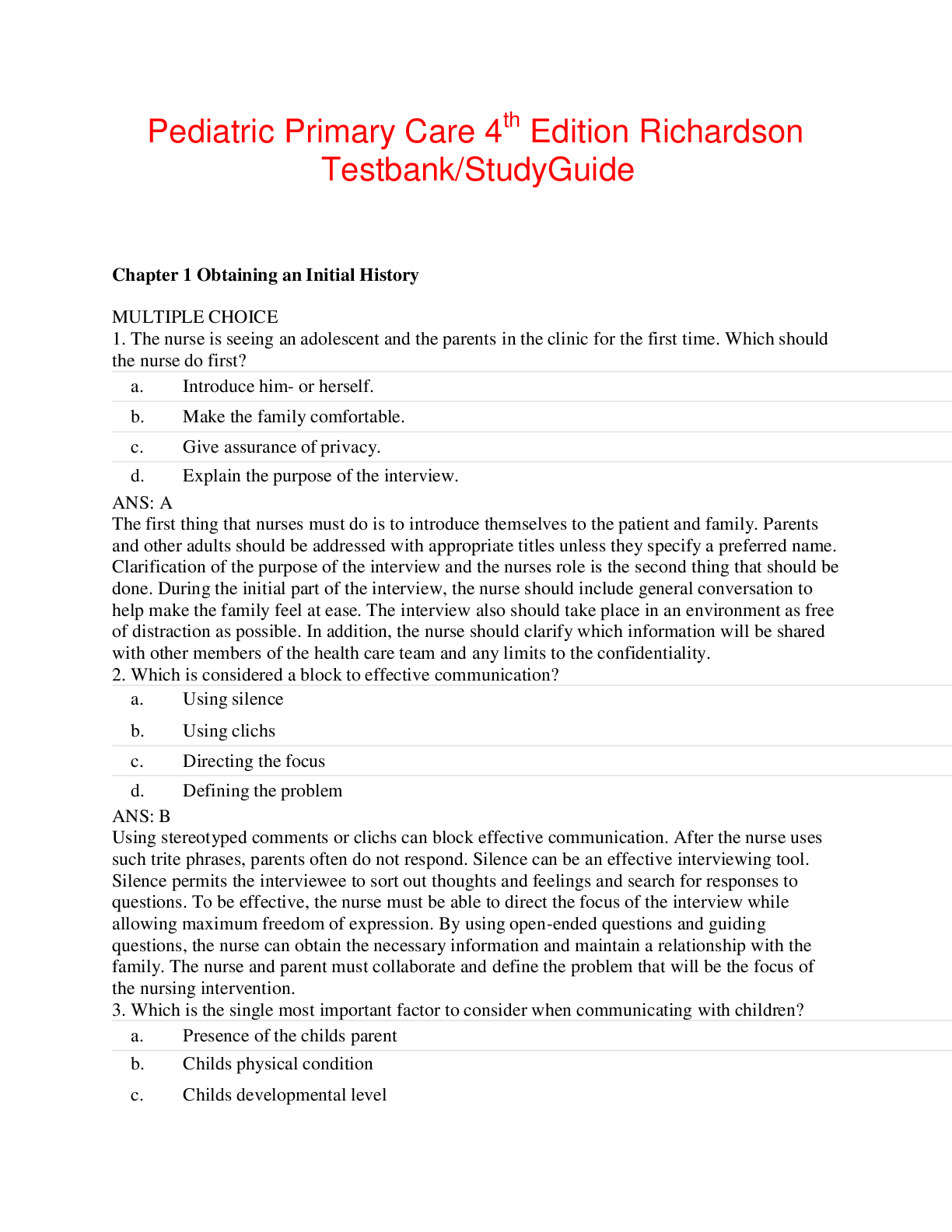

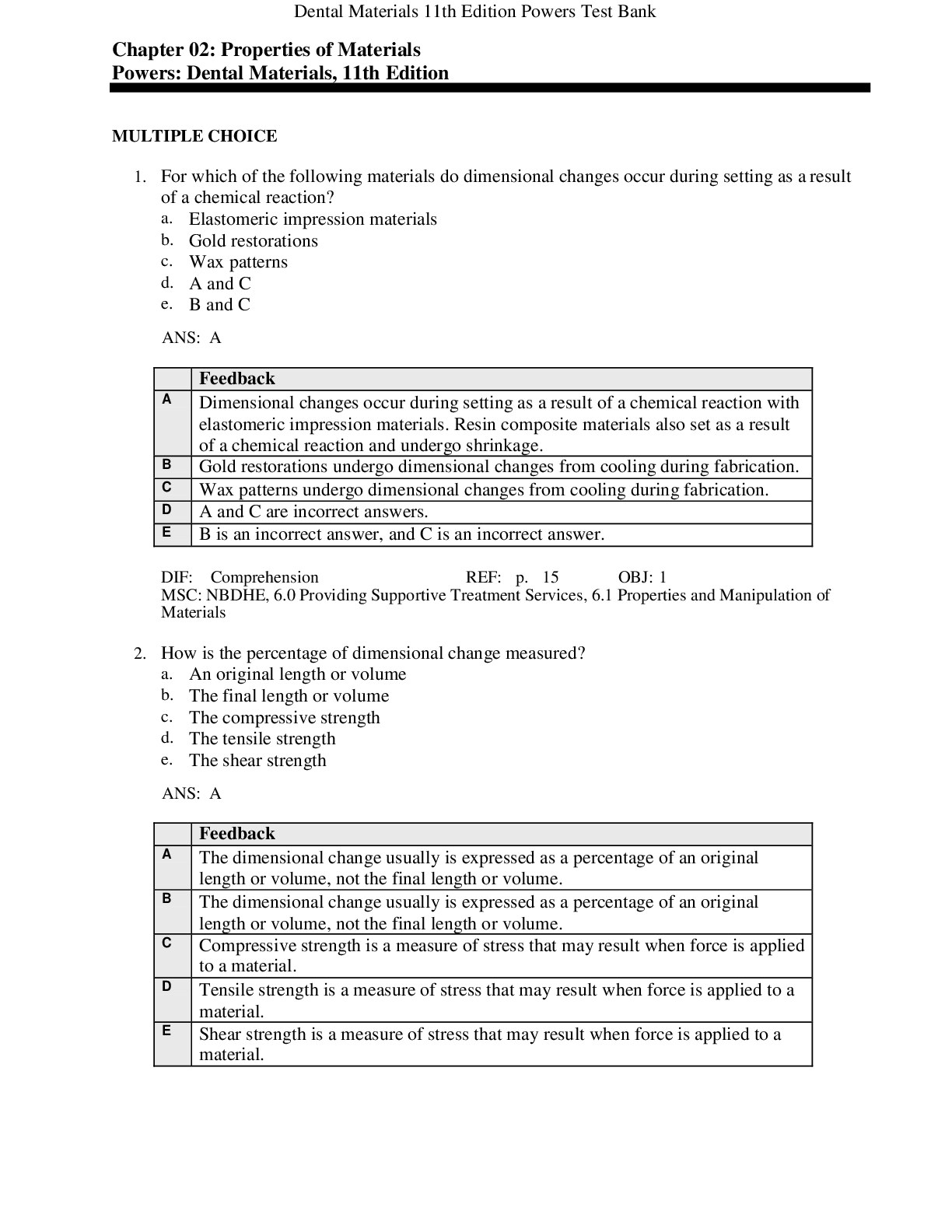
.png)
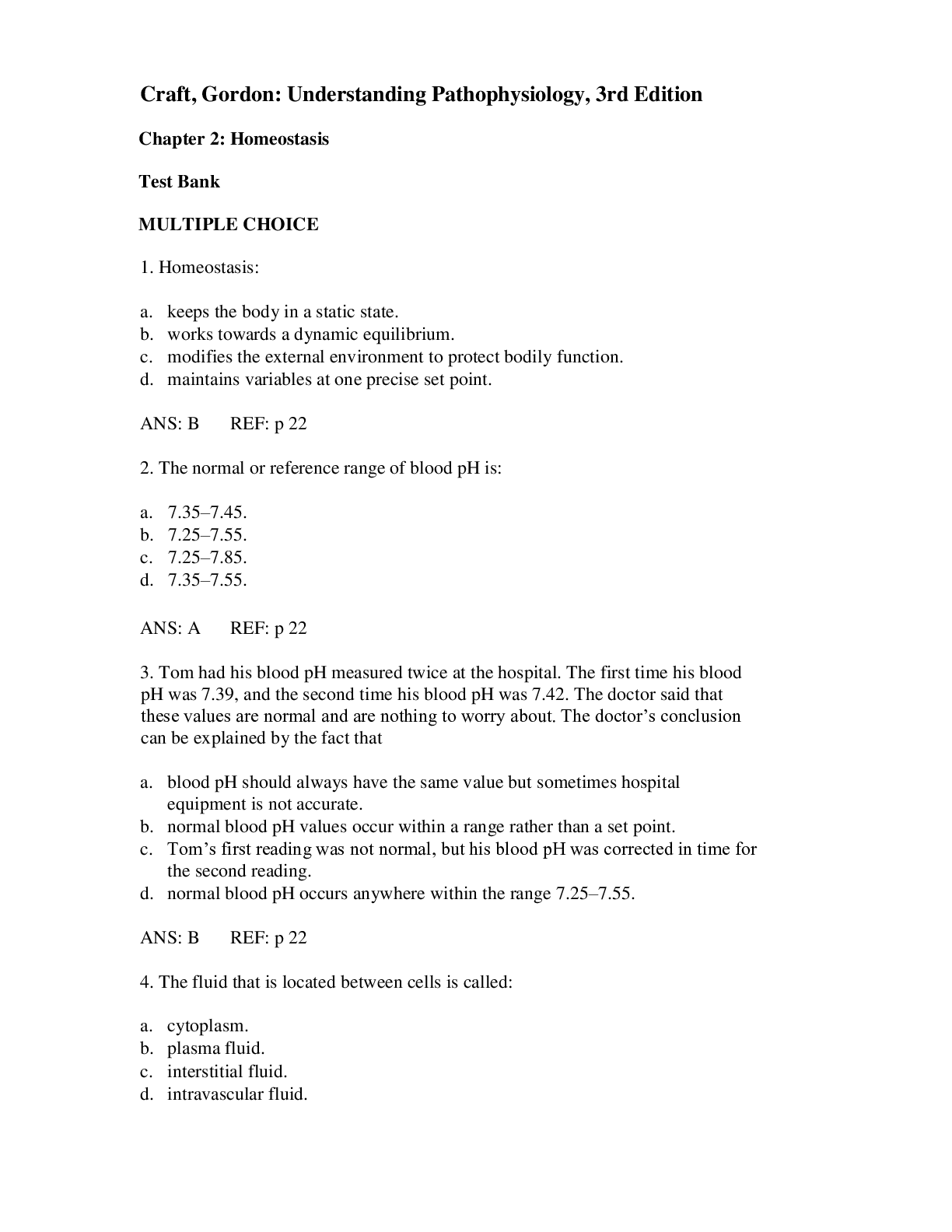



.png)
.png)
